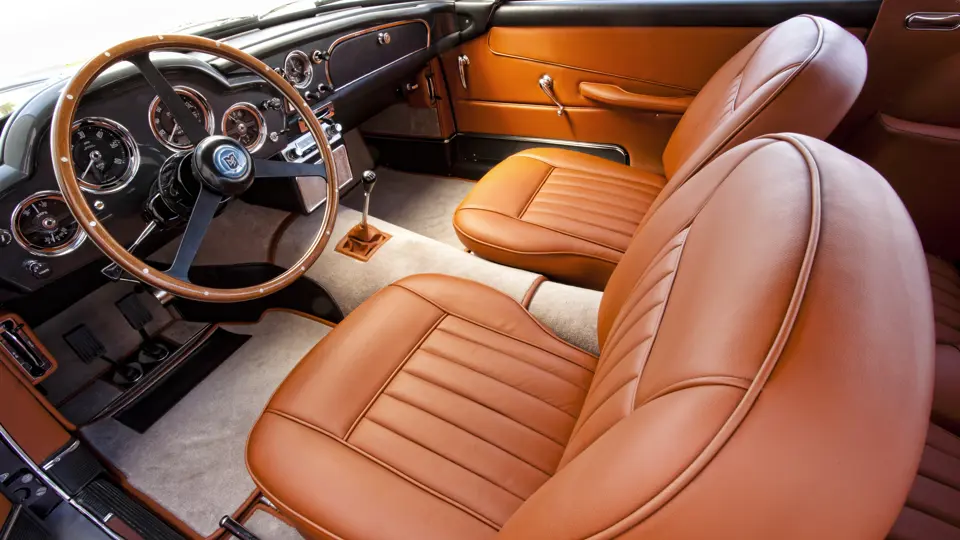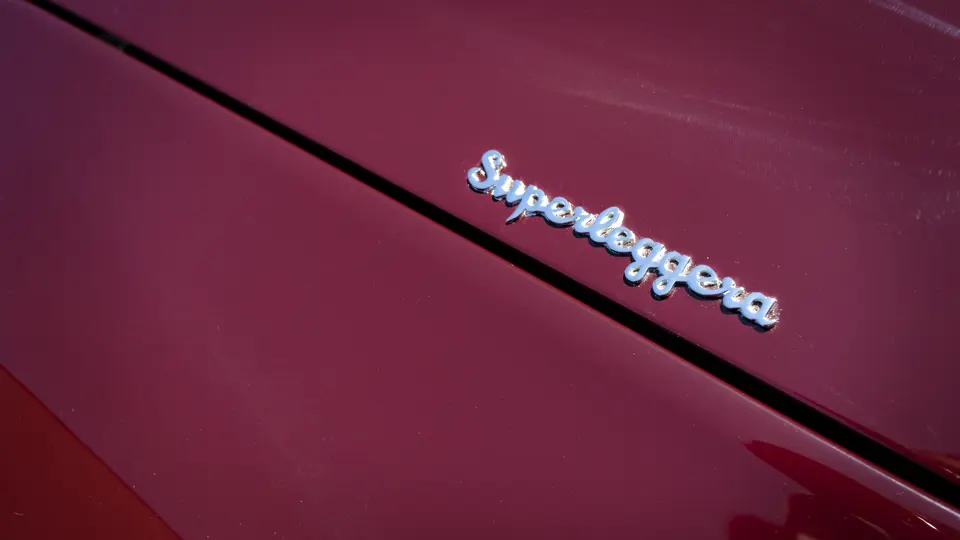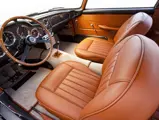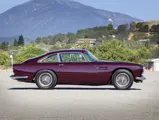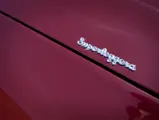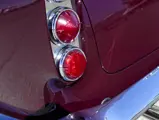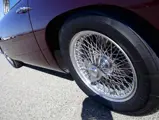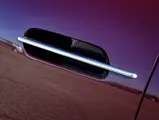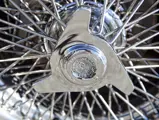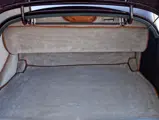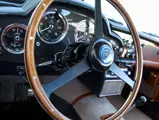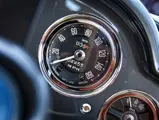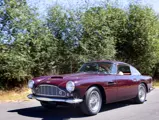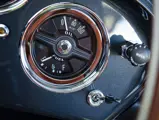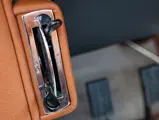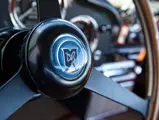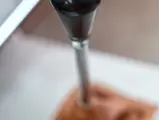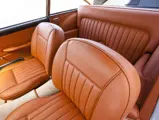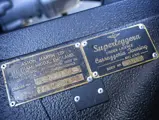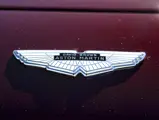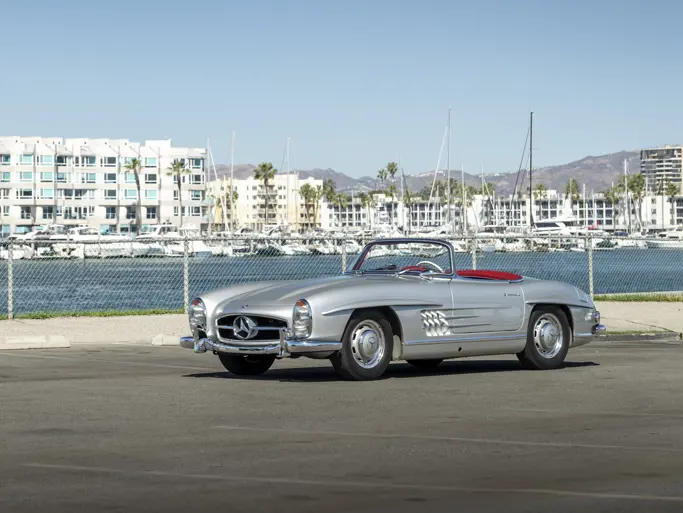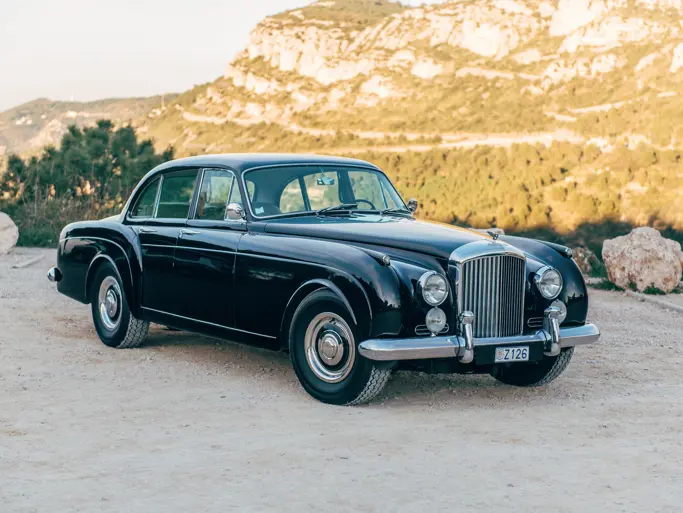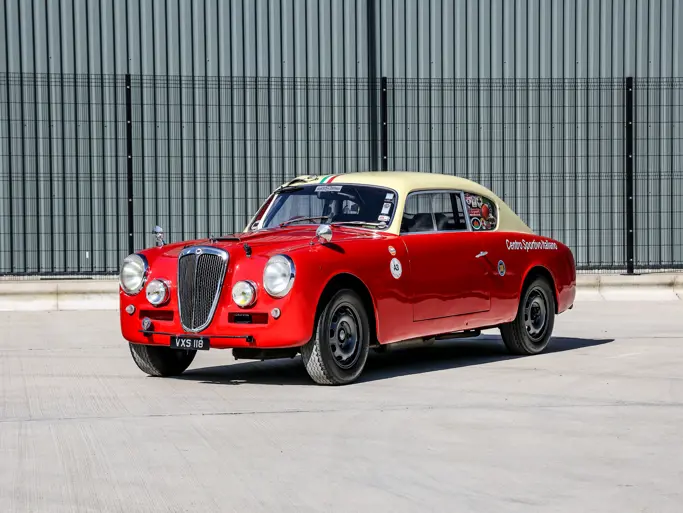240 bhp, 3,670 cc DOHC inline six-cylinder engine, dual SU carburetors, four-speed David Brown manual gearbox with overdrive, independent front suspension with upper and lower control arms, coil springs and anti-roll bar, live rear axle with Watt’s linkage, trailing links and coil springs, and four-wheel, servo-assisted hydraulic disc brakes. Wheelbase: 98"
• Original California delivery, factory left-hand drive vehicle
• Fitted with desirable overdrive option
• Matching numbers
• Fresh, superb concours level restoration by marque specialists
Of all the postwar Aston Martins, David Brown’s gracefully sleek DB4 is perhaps the most admired and has became the template for the entire line of DB4, DB5, and DB6 models, which remained in production until 1970 and elevated Aston Martin on the international stage.
The DB4 was unveiled at the 1958 Paris Salon to sensational acclaim. A totally new car, the DB4 appeared effortlessly modern and breezily international, hitting that sweet spot in between “the Continent and the Crown.”
The specification included a new and robust steel platform chassis engineered by Harold Beech, who had taken over as Aston Martin chief designer from Robert Eberan von Eberhorst. By 1956, plans were well underway for the DB4. Beech recalled taking the DB4 prototype to his home in Pinner, Middlesex, in the summer of 1957, and driving it to Brown's farm in Buckinghamshire, where “Mr. David” then tested it at high speed on local roads and, with typical British understatement, pronounced it “a very promising motor car.” In production form, this rigid frame underpinned an elegant fastback body designed by Touring of Milan, utilizing their vaunted superleggera (super light) process, which consists of a small diameter steel tubing skeleton covered by hand-formed aluminum alloy body panels. The coachwork was constructed by Aston Martin, under license from Touring, eventually at its newly dedicated factory in Newport Pagnell, Buckinghamshire, where production of the DB4 was relocated from London. This new chassis featured independent front suspension and a live rear axle well-located by trailing arms and a Watt’s linkage. Four-wheel disc brakes, plus rack-and-pinion steering, were specified for the first time, both items were advanced for their day and conspicuously ahead of adoption by Ferrari.
The most exciting development, however, was the innovative, alloy twin-cam 3.7-liter straight-six engine, created by Tadek Marek and based upon the DBR2 racing motor. With twin SU carburetors, it was rated at 240 bhp and produced the prodigious torque these DB series Astons have become famous for.
A significant achievement for the small British manufacturer, the DB4 was state-of-the-art for its time, a masterpiece of robust British engineering in combination with exquisite Italian styling. It is said that, in nature, there is a “golden ratio” or “divine proportion,” a shape subliminally pleasing to the eye and calming to the mind. The DB4 design exemplifies this—it can be demonstrated mathematically—and after over 60 years, its design can now be considered timeless.
For that reason, as well as it being the first and “purest” of the DB4/5/6 line that in many respects still defines Aston Martin, the DB4 has become the “connoisseur’s choice.” There were so many running changes and numerous improvements over the course of the model’s production that the Aston Martin Owner’s Club has posthumously divided the range into five distinct series, which dilineate the various nuances of development.
Series IV cars were the last of the “original proportion” DB4s, identifiable foremost by their flatter bonnet scoop, slatted grille, and triple round taillights on either side, and all features were carried over to the larger DB5. Notably, the fourth series cars were the first to offer an overdrive transmission option, important to the emerging world of the high speed motorway system around the world, and particularly in North America.
DB4/794/L is a fourth series example, equipped from new with the desirable overdrive feature. An original California, factory left-hand drive car, it was purchased by the vendor in Oregon, in a disassembled state, though remarkably complete. The former long term enthusiast owner had ambitious plans for a “perfection restoration” and had invested heavily in machine work and began the chassis renovation. However, as time passed, the complexity of attemping the proper restoration of an Aston Martin caught up with him, and he sold the car on to an experienced long term AMOC member willing to go “all the way,” hiring from among the best, most knowledgable craftsmen and with a willingness to follow through without compromise.
Marque specialists Kevin Kay Restorations were retained to take over the nascent but worthy project, confirming that the chassis was a rust-free foundation for their “ground up” process, which is truly a nut-and-bolt journey to international concours standard. A time and resource consuming progression ensued, with the striking result both correct and meticulous to the smallest detail, and to a level which has been rarely attained, let along attempted, for DB4s in the Aston world. The brief was to keep the car to factory stock specification, with only the addition of certain obvious updates, such as the utilization of stainless steel for the exhaust. Even a hard to find, original Radiomobile radio was located and fitted.
Only recently completed, the car is absolutely stunning in Rolls-Royce Deep Claret with Aston Martin Terra Cotta upholstery, made with the finest Connolly-type hides available, and set off with complementary beige Wilton wool carpets that are piped in Terra Cotta. The engine bay and underside are correct and detailed to perfection.
With only road test miles on this stunning concours quality example DB4, it is ready for show or go, a suitable accompaniment to any collection of the world’s finest sports and GT cars. It is outfitted with a correct jack, hammer, a faithful reproduction factory tool roll, and owner’s handbook, and includes comprehensive restoration receipts, a documentary photo disc, a copy of the factory build sheet, and even an unopened Revell Monogram model kit simulation of this car.
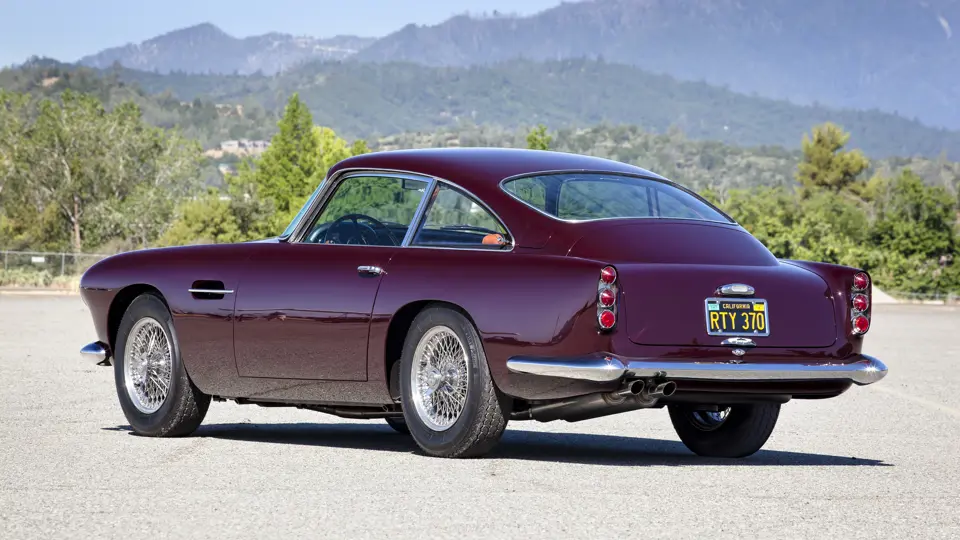

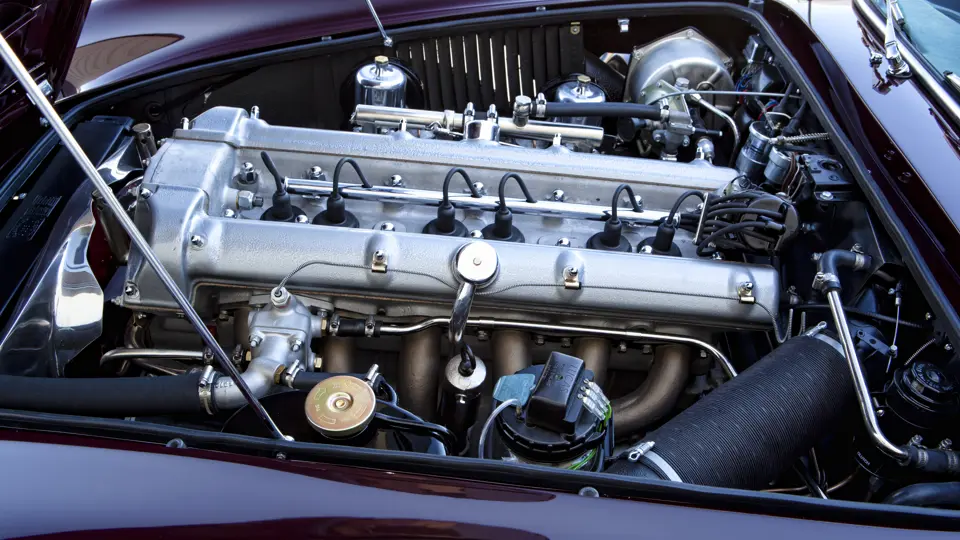

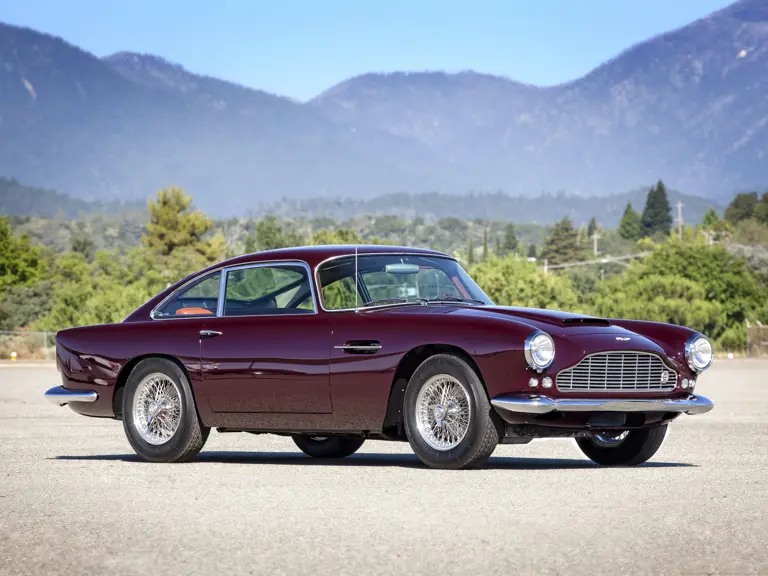
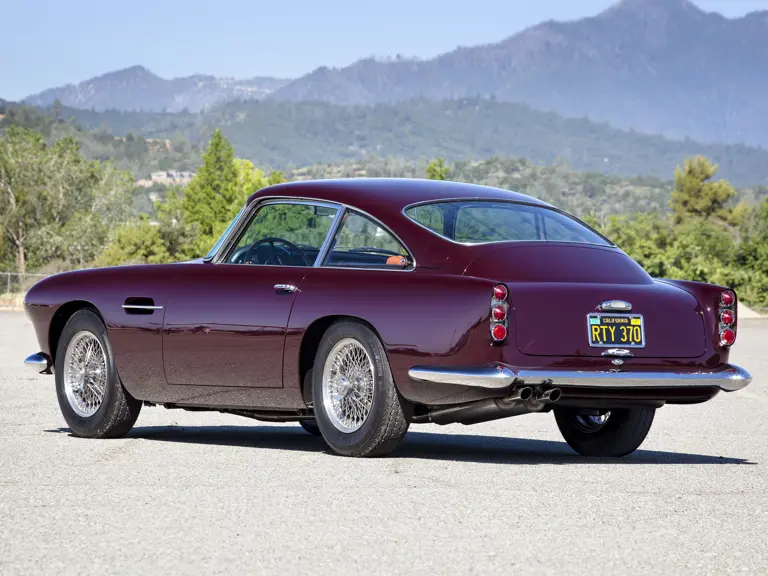
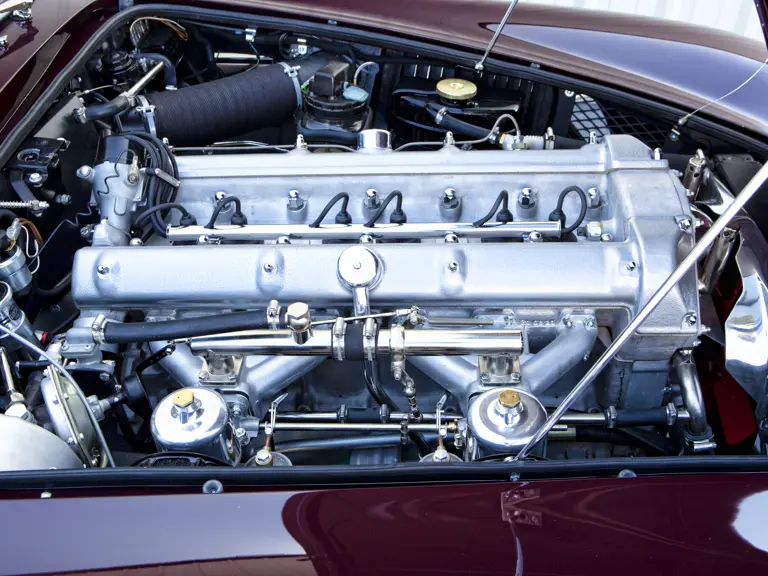
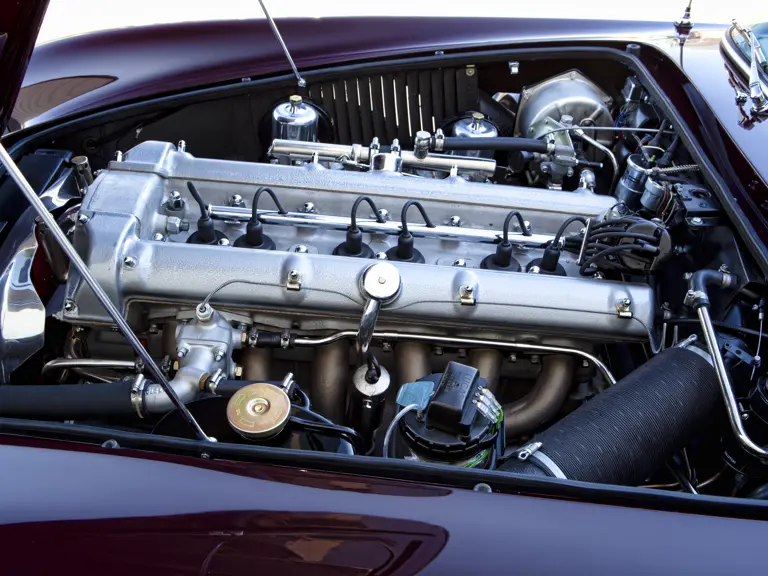

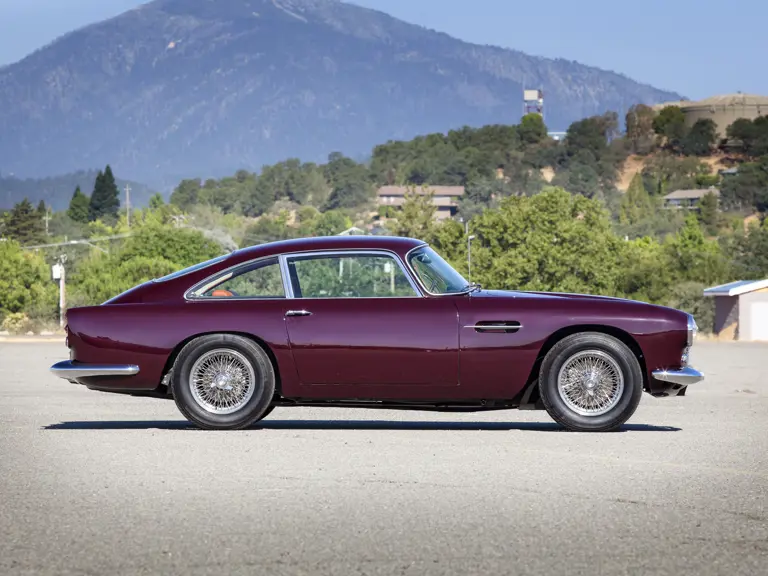
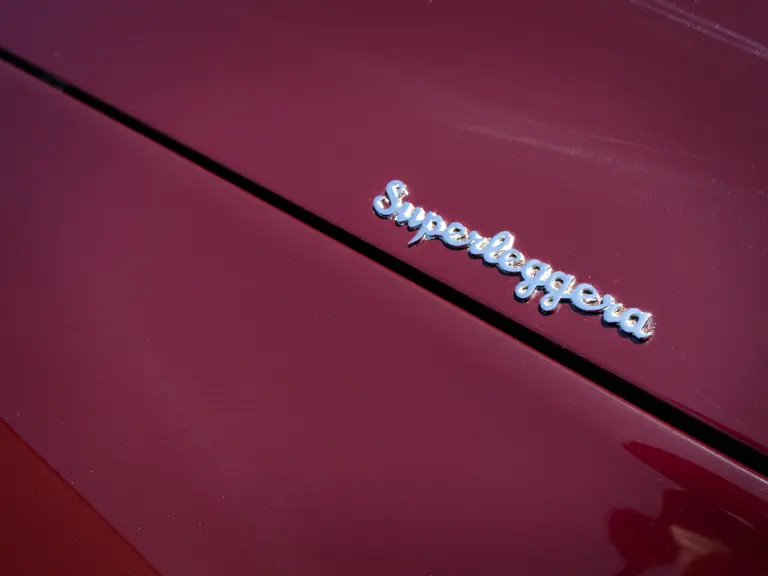
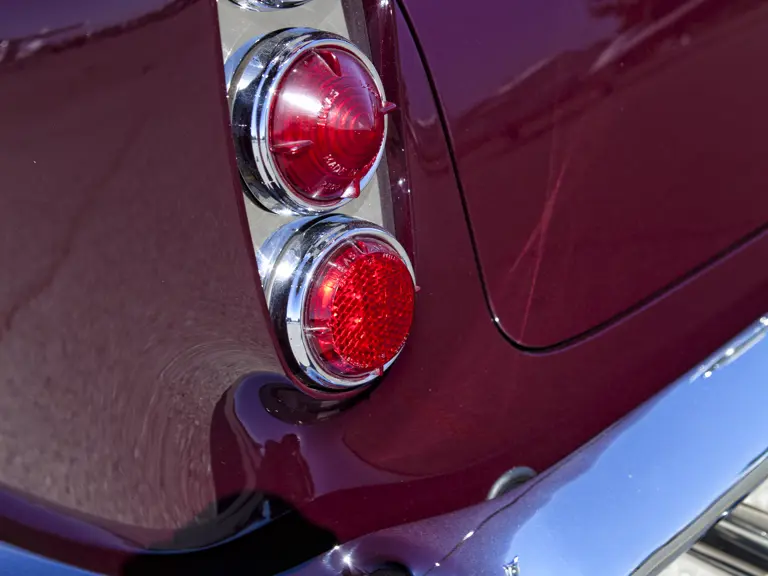
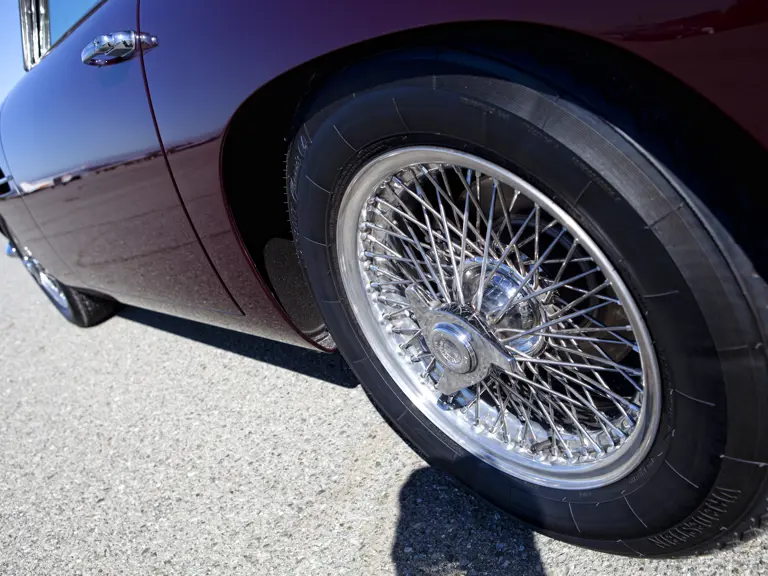
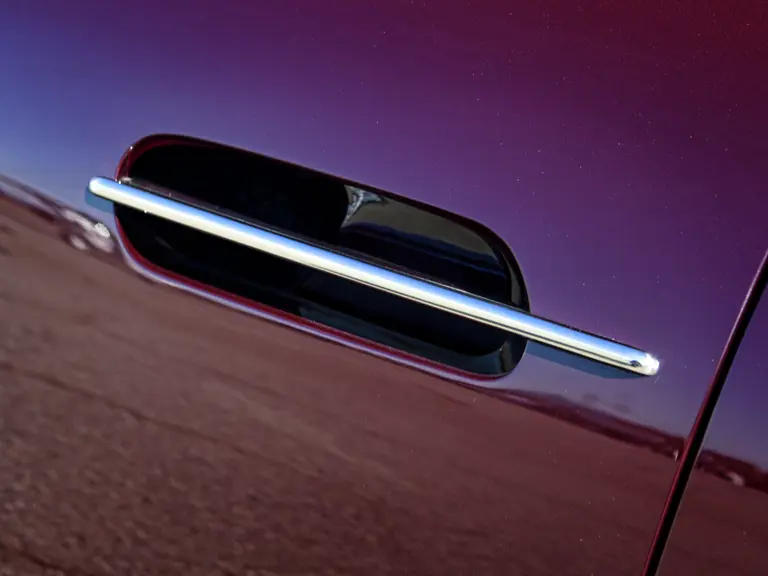
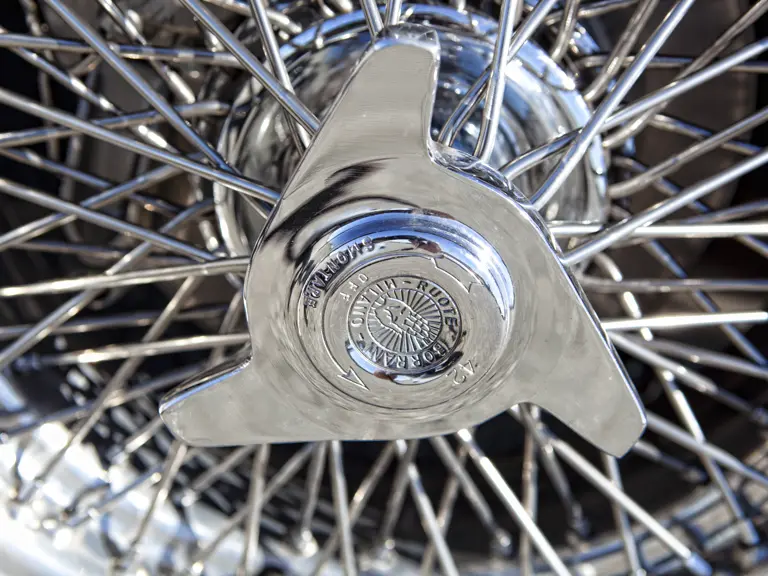
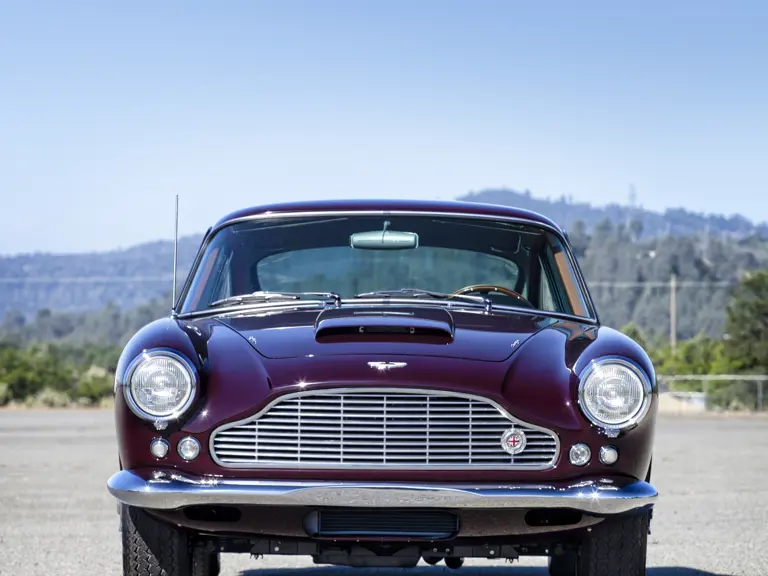
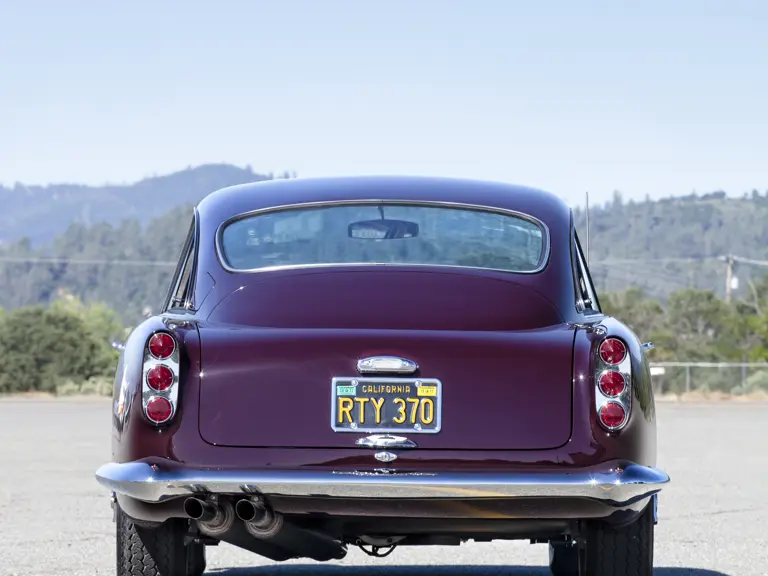
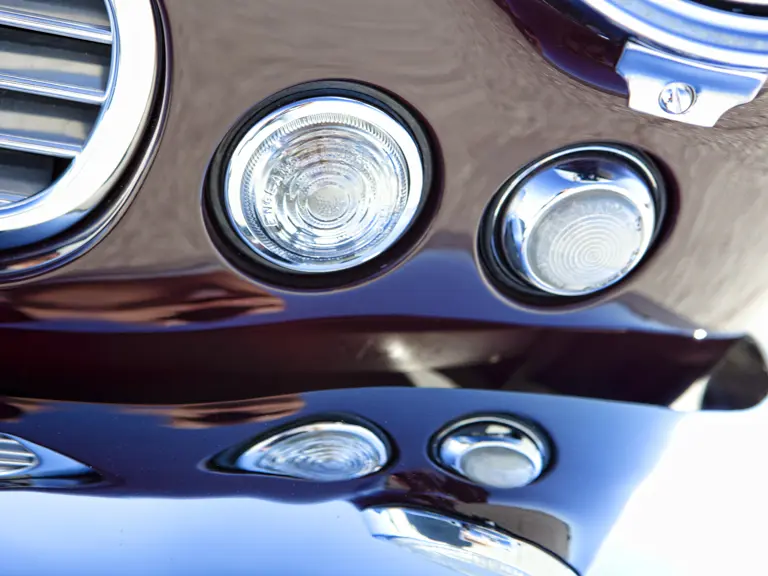
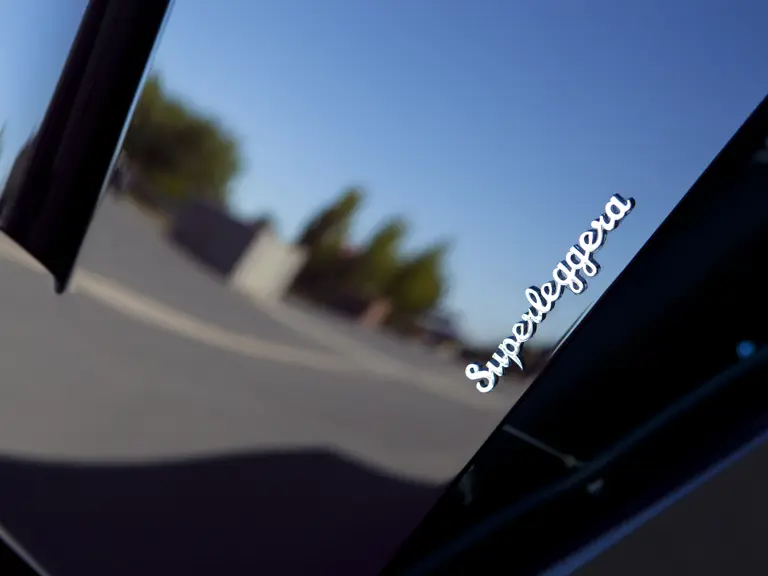
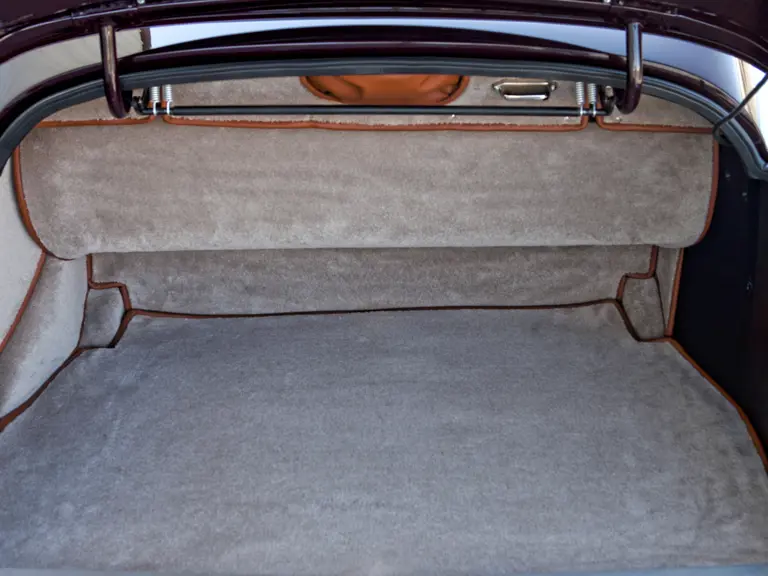
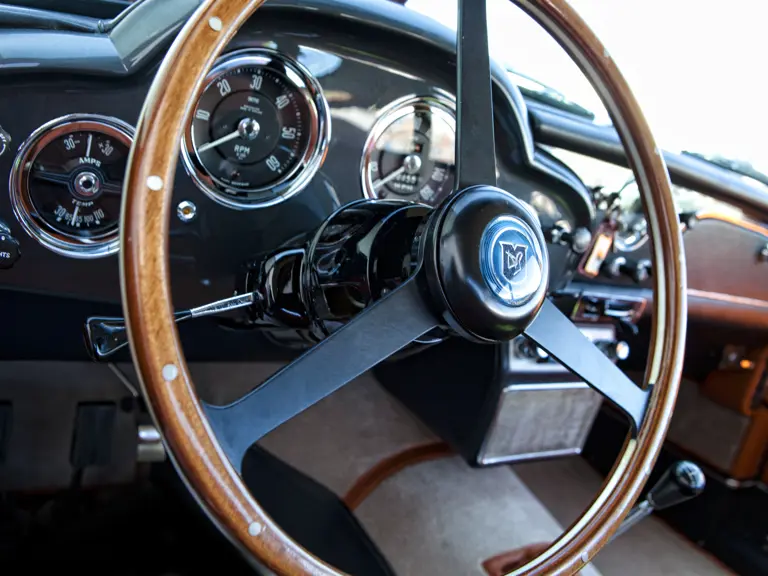

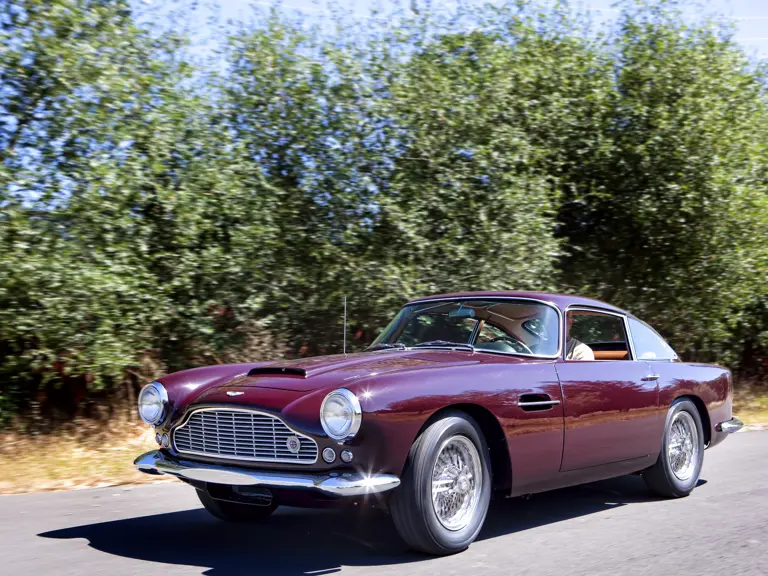
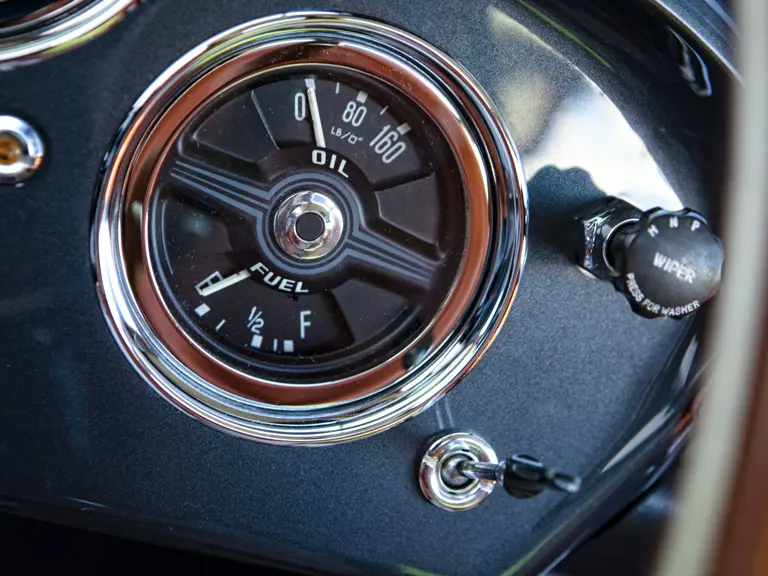
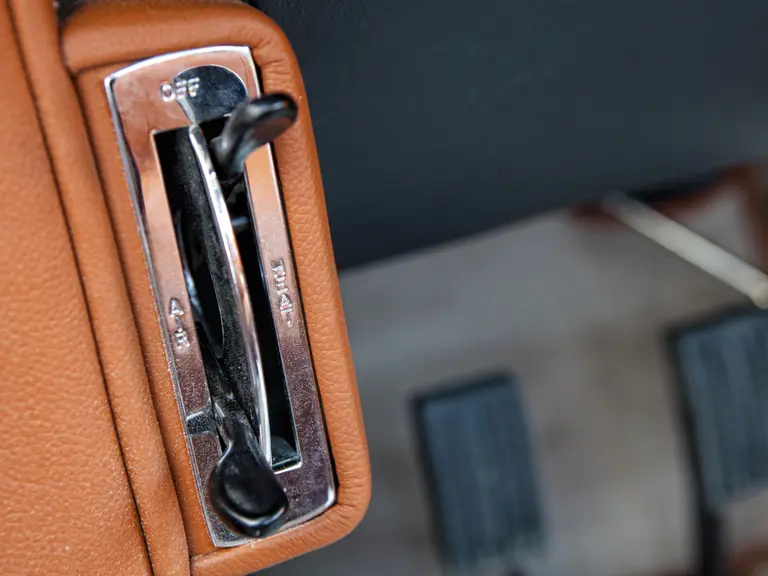
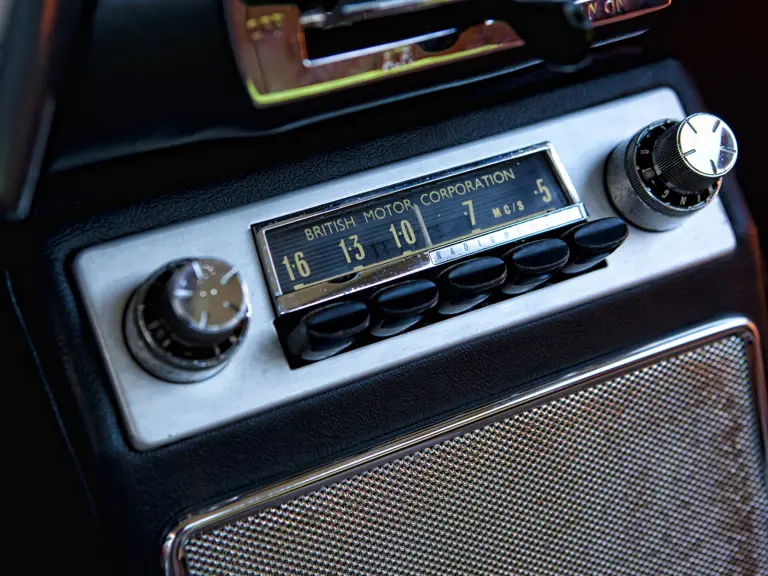
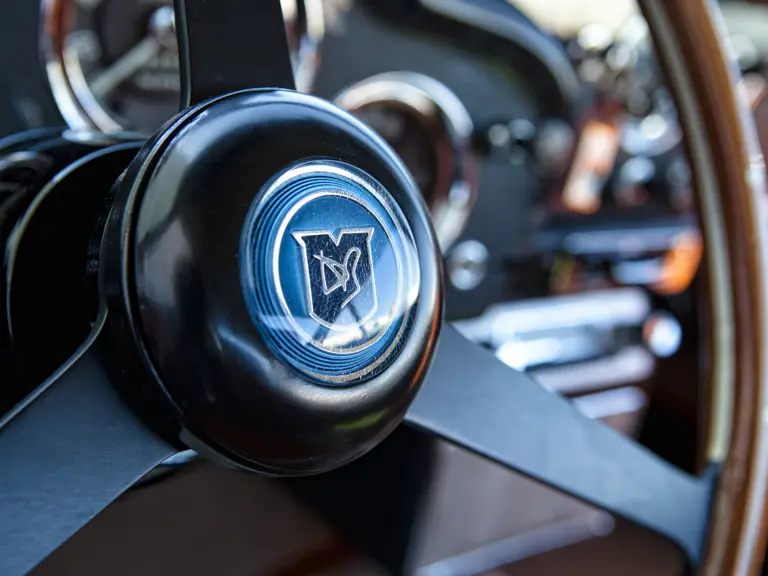

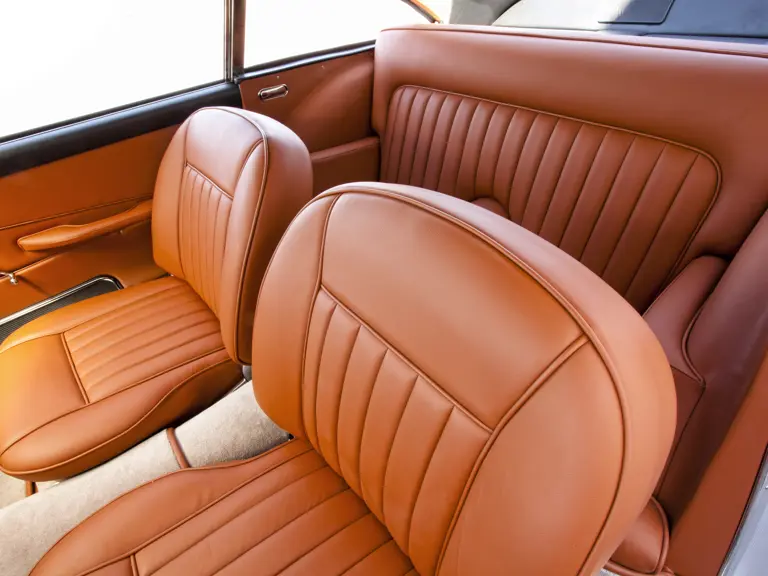

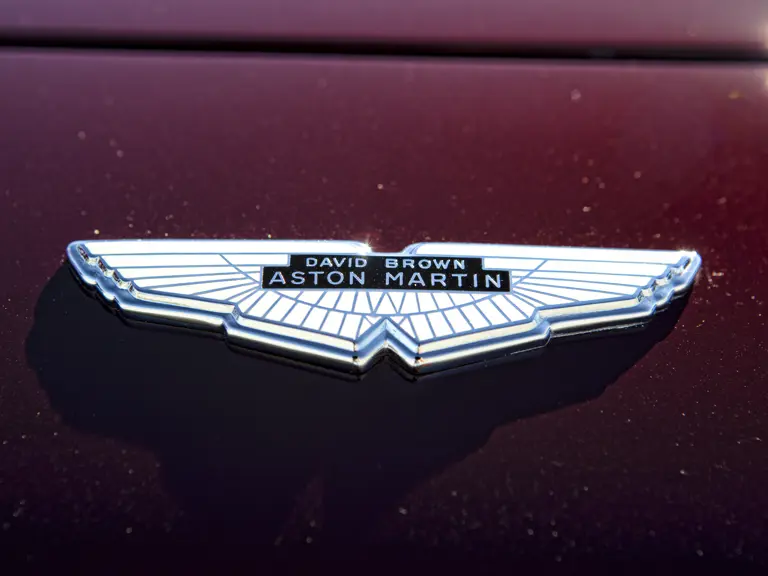


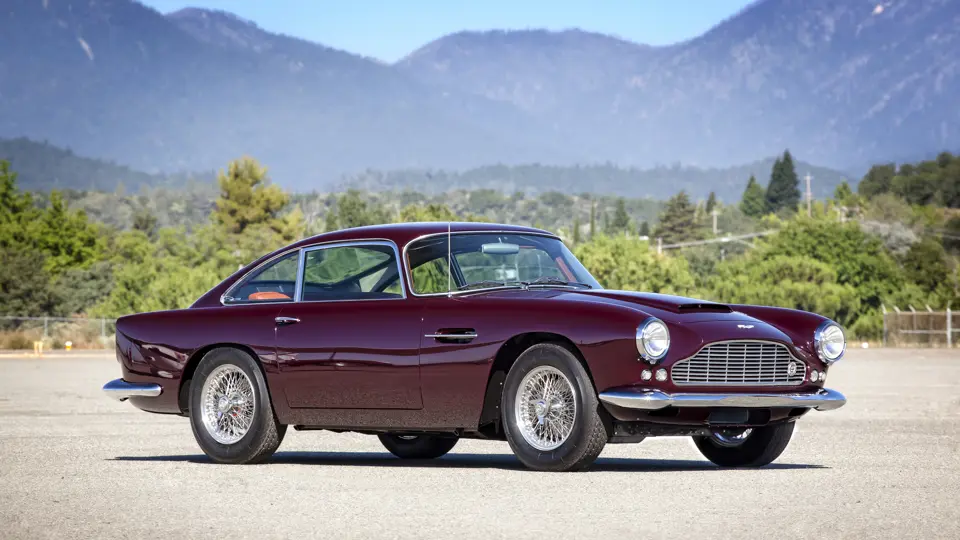
 | Monterey, California
| Monterey, California
